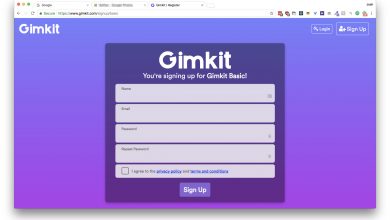Advantages Of Rapid eLearning For Employee Onboarding

Devising an effective on boarding strategy for your organization is extremely crucial. You can’t simply put your new recruits through an hour-long induction process and make them run through their desktops, ask them to read an employee manual and expect them to start working. Neither you can make them go through rigorous classroom training that takes a lot of time. In order to improve employee engagement, neither of the strategies described above will work.
The use of rapid eLearning course for employee onboarding is one of the strategies that has worked for many organizations. They can significantly save a lot of time and money in the development and design of employee onboarding programs. As compared to traditional eLearning development which takes enormous time and includes many resources, rapid eLearning ensures a significant reduction in time and resources.
New Recruits Can Quickly Adjust
It could be detrimental to burst with loads of information during employee orientation programs, stretching over 2-3 days of classroom-based training. This process can be efficiently utilized by starting the onboarding process before the new recruits join the workplace. As an organization, you can give them a warm welcome by showcasing short eLearning modules. For instance, you can show a video message from the CEO welcoming new employees to the organization. You can share the information on job expectations, the paperwork, the dress code, etc. on the first day. It will allow them to clearly understand the company’s expectation before they put their first step in the workplace. Additionally, you can avail the benefits of new hire solutions to achieve your organizational goals. While leveraging rapid eLearning during employee onboarding, you can take the new recruits on a virtual tour of the workplace, which will ensure in-depth familiarity with the new workplace.
Although you can explain your company’s vision, objectives, and work culture during the employee onboarding session, it is rarely the case that new recruits retain that information. To overcome this, you can use rapid eLearning for covering this information. New hires can look up this information irrespective of the time and location.
Rapid eLearning Eliminates The Need Of Classroom-Based Training
Report by the Society of Human Resources Management states that new recruits get 90 days to prove themselves in a job. Hence, it becomes imperative that they quickly realize their preparedness at the workplace to start contributing to organizational growth and development. This could possibly be one of the reasons why organizations are making a shift to blended learning for employee orientation.
Prepare New Recruits To Climb The Learning Curve Quickly
According to the Society of Human Resources Management report discussed earlier, the building blocks of employee onboarding programs consists of 4 Cs, compliance, clarification, culture, and connection. You can employ rapid eLearning as part of the employee orientation program for training related to the 4 Cs in onboarding. The online training extends its benefit by being available on demand for new recruits. As such, they can climb up the learning curve quickly.
Provision Of Rapid Custom elearning For Functional Training
New recruits in your organization can represent departments. Your employee orientation program in a classroom-based environment can give new recruits an overview of various departments. However, when you are onboarding multiple employees for different departments in classroom-based training, it is challenging to impart role-based training to them. With an employee onboarding strategy consisting of rapid custom eLearning, you can efficiently deliver training that is customized to the needs of the department or role the employee will work for.
Final Thoughts
With rapid eLearning in place, you can bring massive transformation to your employee onboarding program. All you’d ever expect is to make the best first impression on your employees. Isn’t it?




